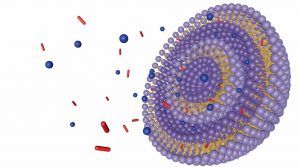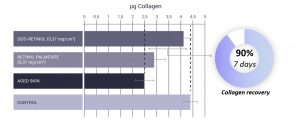(sponsored content)
As a formulator, you’re always on the look-out for more efficient ways to make products more effective, and liposome technology may just be the key. We had a chat to Daniel Pando, CEO of Nanovex Biotechnologies, about how this technology has developed and how it can unlock an ingredient’s potential.
Nanotechnology and liposomes have been around since the 80’s but have clearly drastically improved since then. Can you tell us a bit more about how the technology has evolved?
Although the concept of liposome is similar to that of the 80s and some characteristics are maintained over time, liposomes have evolved (and will continue to do so) in terms of composition and manufacturing methods, among others. In fact, a large part of the new drugs of the future will have this technology, which will have many evolutions with respect to the one developed by Bangham in 1965.

Regarding the composition, it has gone from making liposomes with lecithin to using different types of pure phospholipids and other stabilizers and compounds in a controlled manner that provide certain benefits, such as the ability to release actives on specific targets.
Manufacturing methods have evolved from simple agitation to multi-stage processes, resulting in high encapsulation efficiencies and high stability, among others.
In addition, new characterization techniques allow us to precisely determine all the key parameters of liposomes to guarantee maximum efficiency.
How has Nanovex’s pharma knowledge influenced the calibre of nanotechnology available for cosmetics?
Liposomes have always had special importance in the field of medicine due to their properties: they are capable of releasing a drug specifically to a therapeutic target, increasing its effectiveness while reducing side effects.
Currently, there are many drugs, therapies and vaccines on the market that use this technology, including some COVID-19 vaccines.
Due to these benefits, the “drug delivery” technology based on liposomes or similar systems has been widely accepted in the scientific community as a fundamental tool for the development of new drugs, therapies and vaccines. Therefore, the most innovative and effective drug delivery systems are developed for medical applications.

Nanovex is a company that designs, develops and produces drug delivery systems for medical applications and therefore is at the forefront in the development of the most innovative and efficient liposome-based systems. All this knowledge is transferred to our INdermal cosmetic line to develop the most effective liposome-based drug delivery systems on the market for cosmetic applications.
Nanomaterials have had some bad press in the past – could you tell us about why liposomes are different and how formulators can capitalise on this and deliver benefits to their consumers?
According to Regulation (EC) No. 1223/2009 of the European Parliament and of the Council on cosmetic products:
‘Nanomaterial’ means an intentionally manufactured insoluble or biopersistent material exhibiting one or more external dimensions or an internal structure on the order of 1 to 100 nm;
Therefore, it can be confirmed that liposomes are not nanomaterials since although normally liposomes have sizes slightly greater than 100 nm (which would lead to being NO NANOMATERIAL), even being below this size, they would continue to maintain their NO NANOMATERIAL status, since they are soluble and biodegradable.
Thus, formulators can benefit from all the benefits of liposome-based drug delivery technology without nanomaterial concerns.
Some of these benefits are:
- Encapsulated compound protection
- Release of the encapsulated active in the target layer of the skin or hair
- Increased stability
- Dispersion of lipophilic compounds in aqueous phases
- Masking odours and colouring
All these benefits mean that the effectiveness of the product can increase up to 15 times.
It’s clear that nanotechnology can really transform a product in terms of efficacy, efficiency and stability – what potential impact could this create for the consumers?
Our drug delivery technology based on liposomes enhances the efficacy and quality of cosmetic products while solving multiple formulation problems. Therefore, liposomes facilitate the work of the formulator while giving great added value to the cosmetic product.
However, to offer these benefits, liposomes must be correctly formulated and manufactured depending on the active to be encapsulated, the target where it must be released and the type of cosmetic product where they are to be added.
The specificity of our technology regarding cosmetic target delivery has been tested. The following images show the release of a fluorescent compound in the epidermis, stratum corneum, hair and hair follicle, respectively.

In addition, our technology has been tested using skin penetration and efficacy tests. As example, our DDS-Retinol skin penetration studies showed that when retinol is encapsulated in our liposomes, the penetration to the epidermis increases by 1150% compared to free form. In addition, DDS-Retinol is able of recovering in 7 days 90% of the collagen lost during ageing, 5 times more than free retinol.


This Q&A was brought to you in conjunction with Nanovex Biotechnologies and CEO, Daniel Pando.
Nanovex Biotechnologies SL is an innovative technology-based spin-off from the University of Oviedo founded in 2014 that provides a wide range of services and products in the nanobiotechnology field.
Enjoyed hearing from some of the best in the business? Check out this Q&A with Peruvian-based Promperú.

